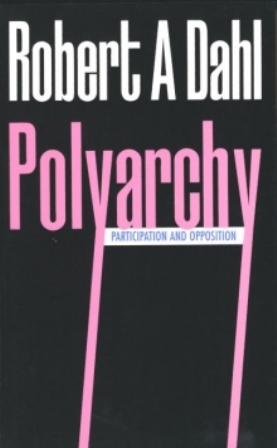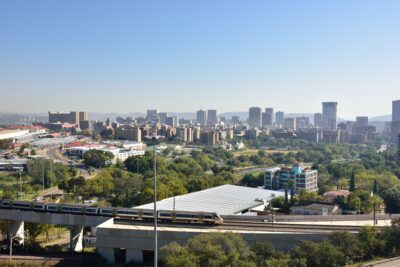The storming of the US Capitol on January 6 was a jarring, almost surreal event; the attack, by US citizens, on the nation’s symbol of democracy sent shockwaves throughout the country and around the world. The images of an angry mob roving through the inner chambers of the Capitol are dark, disturbing, and distressing. However, for scholars of democratic erosion, January 6 was less surprising than tragic, regrettable but by no means unpredictable, as many signs of democratic erosion have long been evident in the United States.
As part of the Democratic Erosion consortium, we teach courses and produce research to better understand challenges to democracy, both within individual countries as well as the current global trend of democratic backsliding.1Susan D. Hyde, “Democracy’s Backsliding in the International Environment,” Science 369, no. 6508 (2020): 1192–1196. By building from examples around the world and over time, democratic erosion scholarship provides a comparative theoretical framework that enables us to examine the United States as a case of democratic backsliding.
“Although what happened may be unprecedented in contemporary US history, it is far from unique in the broader perspective of challenges to democracy globally.”Here, we explore three important insights gleaned from the perspective of democratic erosion scholarship to see what it can tell us about January 6. Although what happened may be unprecedented in contemporary US history, it is far from unique in the broader perspective of challenges to democracy globally. Only by analyzing this as a case rather than through the narrow lens of “American exceptionalism” will we be able to understand the causes and consequences of this focal point in a long process of democratic decline.
January 6 is not unique
To Americans the idea of storming the legislature may have been unimaginable, yet citizens ransacking parliamentary buildings in protest have occurred throughout the world. In fact, three other countries experienced similar events in just the past three months: in Kyrgyzstan, following a disputed election; in Guatemala over a controversial budget; and in Armenia in protest of a peace deal. Protests outside parliaments have erupted over Covid-19 policies in Germany and Serbia. Other parliaments have been burned in Burkina Faso, stormed in Australia, and vandalized in Hong Kong. These dramatic events most often occur following antidemocratic actions by the government in power, whether following a stolen election, violent repression, attempts to extend presidential term limits, or laws curtailing civil liberties.
Indeed, mass mobilization in response to government malfeasance is a core component of democratic politics. Around the world, taking to the streets is a powerful form of “people power” in the face of systemic injustice. In recent years, the United States has witnessed unprecedented levels of citizen demonstrations, from the Women’s March to March for our Lives to the Global Climate Strike to the March for our Lives to the Movement for Black Lives, often in concert with protests around the world. Even our consortium of democratic erosion scholars advocated for citizens to make plans to protest as well as to vote ahead of the 2020 US presidential election.
“The ambiguous and often incremental nature of institutional decay makes it difficult to identify it as corrosive, particularly when the veneer of democracy enables plausible deniability.”And yet, here, civilian protest is a democratic practice that can be captured and subverted for antidemocratic ends. One of the hallmarks of contemporary democratic erosion is when governments use mechanisms associated with democracy to undermine it from within, what scholars call “stealth authoritarianism”2Ozan O. Varol, “Stealth Authoritarianism,” Iowa Law Review 100 (2014): 1673–1712. or “constitutional retrogression.”3Aziz Huq and Tom Ginsburg, “How to Lose A Constitutional Democracy,” UCLA Law Review 65 (2018): 78. Examples include manipulating elections in order to consolidate control rather than a meaningful contest between parties; libel laws used to intimidate, silence, or jail journalists; or co-opting the judiciary with partisan loyalists. The ambiguous and often incremental nature of institutional decay makes it difficult to identify it as corrosive, particularly when the veneer of democracy enables plausible deniability.4David Waldner and Ellen Lust, “Unwelcome Change: Coming to Terms with Democratic Backsliding,” Annual Review of Political Science 21 (2018): 93–113. On January 6, mass demonstrations were weaponized by the executive branch (and aided by the Republican Party), employing the language of prodemocracy activism (“Stop the Steal!”) for antidemocratic disruption.
From this vantage, what made January 6 so remarkable was its “un-stealthiness,” the surreal spectacle of hundreds of Americans taking selfies as they stormed the Capitol. Yet academic debates over whether January 6 constituted a coup or the floor debates following the insurrection in which Republican lawmakers defended the right to assemble and decried injuries to their First Amendment rights, underscore both the insidious and uncertain nature of democratic erosion—as well as the perversion of democratic principles.
January 6 is the outcome, not the cause
The second major insight that democratic erosion scholarship yields is that January 6 is more usefully seen as an outcome, or accelerator of, but not a cause of democratic decline. The United States has not been immune from wider global trends. The 2020 Annual Freedom House Report finds that democracy, civil liberties, freedom, minority rights, and pluralism have been in decline globally for 14 consecutive years, along with the United States’ own ranking. Other democracy indices have also tracked the recent US decline. Some key metrics informing the descending score include declining levels5Jack Citrin and Laura Stoker, “Political Trust in A Cynical Age,” Annual Review of Political Science 21 (2018): 49–70. of trust in institutions of governance and elections, high levels of economic inequality, and high levels of political polarization.6Milan W. Svolik, “Polarization versus Democracy,” Journal of Democracy 30, no. 3 (2019): 20–32. They also chart the rise of key indicators7Steven Levitsky and Daniel Ziblatt, How Democracies Die (New York: Broadway Books, 2018), 23–24. of authoritarian behavior: a rejection of democratic norms and rules; denial of the legitimacy of political opponents; readiness to attack the media; and—as we observed on January 6 (and before)—toleration, or encouragement, of violence.
“Of this long list of “symptoms” perhaps the most worrisome is the alarming level of polarization that we have observed grow wider over time—another global trend.”Of this long list of “symptoms” perhaps the most worrisome is the alarming level of polarization that we have observed grow wider over time—another global trend.8Jennifer McCoy, Tahmina Rahman, and Murat Somer, “Polarization and the Global Crisis of Democracy: Common Patterns, Dynamics, and Pernicious Consequences for Democratic Polities,” American Behavioral Scientist 62, no. 1 (2018): 16–42. Americans increasingly communicate, associate, live with and even marry only those who hold similar partisan views.9Shanto Iyengar and Masha Krupenkin, “The Strengthening of Partisan Affect,” in “Advances in Political Psychology,” supplement, Political Psychology 39, no. S1 (2018): 201–218. This toxic divide is better described by the term political sectarianism,10Eli J. Finkel et al., “Political Sectarianism in America,” Science 370, no. 6516 (2020): 533–536. which alludes to a situation in which citizens of opposing views ascribe malign intent to out-groups, not just with respect to policy preferences, but even extending to dehumanization, which we know is often a precursor to violence. This divide in our civic fabric has been accelerated by the pernicious impacts of an increasingly polarized and partisan media landscape, which is among the worst in the advanced industrial world. Social media platforms11Francis Fukuyama, Barak Richman, and Ashish Goel, “How to Save Democracy from Technology: Ending Big Tech’s Information Monopoly,” Foreign Affairs, Jan.–Feb. 2021. also create echo chambers that contribute to confirmation bias and even radicalization,12Christopher A. Bail et al., “Exposure to Opposing Views on Social Media can Increase Political Polarization,” PNAS 115, no. 37 (2018): 9216–9221. rather than allowing for real policy debates or the sharing of information that challenges their beliefs. The overall impact is to reduce the likelihood of support for policy compromise and to increase divisive “identity politics.”13 Chicago: The University of Chicago Press, 2018More Info →
Chicago: The University of Chicago Press, 2018More Info →
An important driver of political sectarianism in the United States and the rest of the world is the exponential growth of misinformation, disinformation, or truth decay.14Jennifer Kavanagh and Michael D. Rich, Truth Decay: An Initial Exploration of the Diminishing Role of Facts and Analysis in American Public Life (RAND Corporation, 2018). In an already hyperpolarized environment, driven by a Wild West of partisan or uncurated digital media, attacks on journalists as purveyors of “fake news,” and elected officials who blatantly lie, citizens are unable to even agree on what is the truth.15Nina Jankowicz, “How to Defeat Disinformation: An Agenda for the Biden Administration,” Foreign Affairs, November 19, 2020. This erodes not only trust in democratic institutions, but also scientific expertise in areas such as climate change or, in the era of pandemic, public health. In addition, it drives the epidemic of conspiracy theories, from QAnon to the “stolen” 2020 election.
“Another hallmark of a consolidated democracy is a condition in which the majority of the citizenry accepts the legitimacy of the system, respects the rules of the game, and doesn’t resort to extraconstitutional measures, like violence, to secure a result they would prefer.”Finally, we need to highlight the alarming growth of racist, right-wing, and anti-institutional militia groups during the Trump presidency, movements that, again, are part of a wider global trend.16Matt Golder, “Far Right Parties in Europe,” Annual Review of Political Science 19 (2016): 477–497. These groups are not new; however, they have been emboldened and exploded in membership and brazenness over the last four years, “debuting” in Charlottesville and most recently with their show of strength on January 6. One of the fundamental minimal procedural thresholds for democracy established by Dahl and amended by Schmitter and Karl17Philippe C. Schmitter and Terry Lynn Karl, “What Democracy Is. . . and Is Not,” Journal of Democracy 2, no. 3 (1991): 75–88. includes the need for “efficiency” through which popular opposition cannot habitually impede the exercise of legitimate authority. Another hallmark of a consolidated democracy is a condition in which the majority of the citizenry accepts the legitimacy of the system, respects the rules of the game, and doesn’t resort to extraconstitutional measures, like violence, to secure a result they would prefer.18 Oxford University Press, 2005More Info → The conduct of President Trump and his enablers, following the election, to not only cast doubt on the legitimacy of the election, but democracy itself, was a blatant violation of this minimal condition. The events of January 6 are also a direct result of his incitement, encouragement, and the willingness of those most radicalized by political sectarianism, truth decay, and conspiracy theories to act as they did.
Oxford University Press, 2005More Info → The conduct of President Trump and his enablers, following the election, to not only cast doubt on the legitimacy of the election, but democracy itself, was a blatant violation of this minimal condition. The events of January 6 are also a direct result of his incitement, encouragement, and the willingness of those most radicalized by political sectarianism, truth decay, and conspiracy theories to act as they did.
January 6 was a game of follow the leader
How did Trump create such a loyal base, hundreds of whom were committed to violently storm the Capitol? A final theme in the democratic erosion literature is the rise of populism of both the right and left varieties. Here again, the emergence of an ethno-nationalist populist in the form of Donald Trump is an outcome, rather than a cause, of democratic erosion in the United States. Demagoguery and populism are not new phenomena, but there has been a clear trend of the reemergence of populist leaders in the past decade across the globe. While these leaders come in many stripes and flavors, they all share certain characteristics associated with populism: an antielitist, antipluralist, and an exclusionary form of identity politics.19 Philadelphia: University of Pennsylvania Press, 2016More Info →
Philadelphia: University of Pennsylvania Press, 2016More Info →
First, populists typically espouse a very thin ideology that only addresses a political agenda that furthers their own self-interested aims, whether to expand their power or piggy bank. They are not “deep thinkers” or adherents to a holistic ideology that addresses how society, politics, and the economy should be ordered, just that the current situation is intolerable to their base. These conditions may be cultural, economic, or both. Pippa Norris points out that populists typically use simple slogans and very direct, often boorish or colloquial language in order to appeal to, and appear to be, part of their base. This “real talk” often works in concert with weaponized rhetoric deployed to discredit enemies, command allegiance, and avoid accountability.20Jennifer R, Mercieca, “Dangerous Demagogues and Weaponized Communication,” Rhetoric Society Quarterly 49, no. 3 (2019): 264–279.
To complement this, they also demonstrate contempt for established norms to underscore their antiestablishment bona fides, which distinguish them even from members of their own party or government. Because of this, populists align with whichever part of the political spectrum that best fits their immediate goals, left or right. They are tactical and transactional, not strategic actors. They command loyalty to themselves rather than to party or country. Quite simply, it’s all about them.
“They split the citizenry into antagonistic groups—the pure, real, and good vs. the corrupt, alien, and evil—and claim to represent only the group they consider to be the legitimate ‘people.’”Second, populists are dividers, not uniters. They split the citizenry into antagonistic groups—the pure, real, and good vs. the corrupt, alien, and evil—and claim to represent only the group they consider to be the legitimate “people.” Populism is antipluralist, and thus contradictory to a fundamental concept of modern democracy. They separate the polity into irreconcilable camps: the people vs. the establishment, us vs. them. Again, here Donald Trump is a classic case, with many in his own party lamenting the fact that he made no attempt to widen his base, only to keep them in lockstep with him. And, when Trump gave an inflammatory speech on the morning of January 6, his loyal followers listened and, more than that, they were organized and prepared to act.
Major takeaways?
It is abundantly clear that President Trump leaving office is not the end of an era, but likely the beginning of a larger reckoning about the systemic injustice and fragility of our democracy. In our Democratic Erosion Event Dataset, January 6 will likely be coded as a violent/security precursor event. As of this writing, we do not know if US democracy has actually passed the greatest stress test perhaps since the Civil War. Many who have made optimistically premature pronouncements to this end may need to reassess. The challenges ahead of us are daunting, but one of the most important lessons that we can learn from the scholarship on democracy, in all its stages—transitioning, consolidating, or declining—is that political regimes are dynamic, and processes can be started, stopped, or reversed.
Strengthening our democracy requires us to think systemically and institutionally, to view democracy as “a collage of institutions crafted and recrafted by different actors at different times.”21Nancy Bermeo, “On Democratic Backsliding,” Journal of Democracy 27, no. 1 (2016): 5–19, 4. We start the Democratic Erosion course with Dahl’s concept of a polyarchy,22 New Haven: Yale University Press, 1972More Info → the ideal embodiment of a government system characterized by inclusion and participation. Systemic reforms that bring us closer to these ideals should be where we put our collective efforts as actors invested in the ongoing “crafting and recrafting” of our democracy. We need to dismantle systemic racism in our policing, healthcare, education, and judicial systems. We need to hold those responsible for the January 6 event—whether through their words, their actions, or inactions—to account. We need to think beyond overcoming partisan divisions and realize this is a democracy problem.
New Haven: Yale University Press, 1972More Info → the ideal embodiment of a government system characterized by inclusion and participation. Systemic reforms that bring us closer to these ideals should be where we put our collective efforts as actors invested in the ongoing “crafting and recrafting” of our democracy. We need to dismantle systemic racism in our policing, healthcare, education, and judicial systems. We need to hold those responsible for the January 6 event—whether through their words, their actions, or inactions—to account. We need to think beyond overcoming partisan divisions and realize this is a democracy problem.
Though the democratic erosion literature can tell us about how we got here, it may prove inadequate to guide us out. Our colleagues studying militia networks,23Sarah E. Parkinson and Sherry Zaks, “Militant and Rebel Organization(s),” Comparative Politics 50, no. 2 (2018): 271–90. truth commissions, and democracy building can provide comparative lessons and insights. Again, expanding the lens beyond the United States to draw on phenomena around the world is more critical than ever when our standing as a global beacon of democracy has been so dramatically diminished and its future is so very uncertain.













